Top 10 Most Technologically Advanced Arenas in the World 2025
By ICON TEAM | Published on Oct 10, 2025
In 2025, sports arenas all over the world are more than simply places to watch games. They are also centers of innovation, where new technologies and architecture come together to create immersive, eco-friendly, and fan-centered experiences. These stadiums change the way people experience live events with things like AI-powered operations, huge LED screens, seamless digital integrations, and energy-efficient equipment. This list shows the top 10 most technologically sophisticated arenas, based on their innovative use of smart infrastructure, immersive visuals, and eco-friendly improvements, as of October 2025.
Top 10 Most Technologically Advanced Arenas in the World 2025:
1. Santiago Bernabéu Stadium, Madrid:
The Santiago Bernabéu Stadium in Madrid is the most advanced European football arena in terms of technology. It has been completely renovated to make it one of the smartest stadiums in the world. A revolutionary relationship with Cisco, which was extended in June 2025, is at the heart of its progress. This cooperation brings sophisticated networking, AI infrastructure, and new ways to communicate throughout the stadium and Real Madrid's training center at Real Madrid City. This partnership improves fan engagement by providing seamless Wi-Fi coverage, real-time data analysis for personalized experiences, and AI-powered crowd control tools that make events safer and more efficient. One of the best features is the huge 360-degree television scoreboard that goes around the inside of the stadium's retractable roof. It shows ultra-high-definition images from every aspect and supports immersive content for games, concerts, and even eSports events.
The stadium's digital environment also has cutting-edge 5G integration for augmented reality (AR) overlays on mobile apps. This lets fans see live stats, replays, and virtual tours without missing any of the action. Sustainability is built into the technology, with energy-efficient LED lights and clever climate controls that keep things comfortable while cutting operational expenses by up to 30%. The Bernabéu is a great example of how technology can keep the charm of an old building while moving it into the future of entertainment. For example, it has modular seating that can be changed for NFL games and multimedia concerts. Real Madrid will host big events like the 2025 Club World Cup there.
2. SoFi Stadium, Los Angeles:
SoFi Stadium in Los Angeles is still a tech-forward marvel in 2025. It combines Hollywood-level production with sports innovation to create what many call the "future of live entertainment." At its center is the Oculus, a huge 70,000-square-foot 4K double-sided video display suspended above the field. It has 260 high-fidelity speakers for spatial audio and 50 embedded 5G antennas that make sure over 70,000 fans can connect with ultra-low latency. This engineering marvel not only shows game highlights, but it also projected moving light shows and interactive commercials, making the stadium a living canvas. Deloitte Digital has changed the guest experience platform a lot in the last several years, and this year it has changed even more. For example, fans may now get personalized notifications through the SoFi app for concessions, parking, and even seat upgrades based on real-time behavior data.
The stadium's see-through ETFE roof has a network of LED panels built into it. This lets it change the amount of shade and light based on the weather and events, and it uses 20% less energy thanks to solar power. Hidden beneath its elegant, below-ground architecture are earthquake-resistant sensors and structural monitoring systems that employ IoT to detect and manage seismic hazards, a key aspect in California's volatile terrain. For 2025, there will be more AR features for virtual tailgating areas outside the venue, where fans may interact with digital avatars of players before they go inside. SoFi's dedication to making things accessible is shown in its haptic feedback seating for fans who can't hear and voice-activated navigation. This makes it a model for high-tech, inclusive stadiums that hosted the Super Bowl and will host the 2028 Olympics.
3. AT&T Stadium, Arlington:
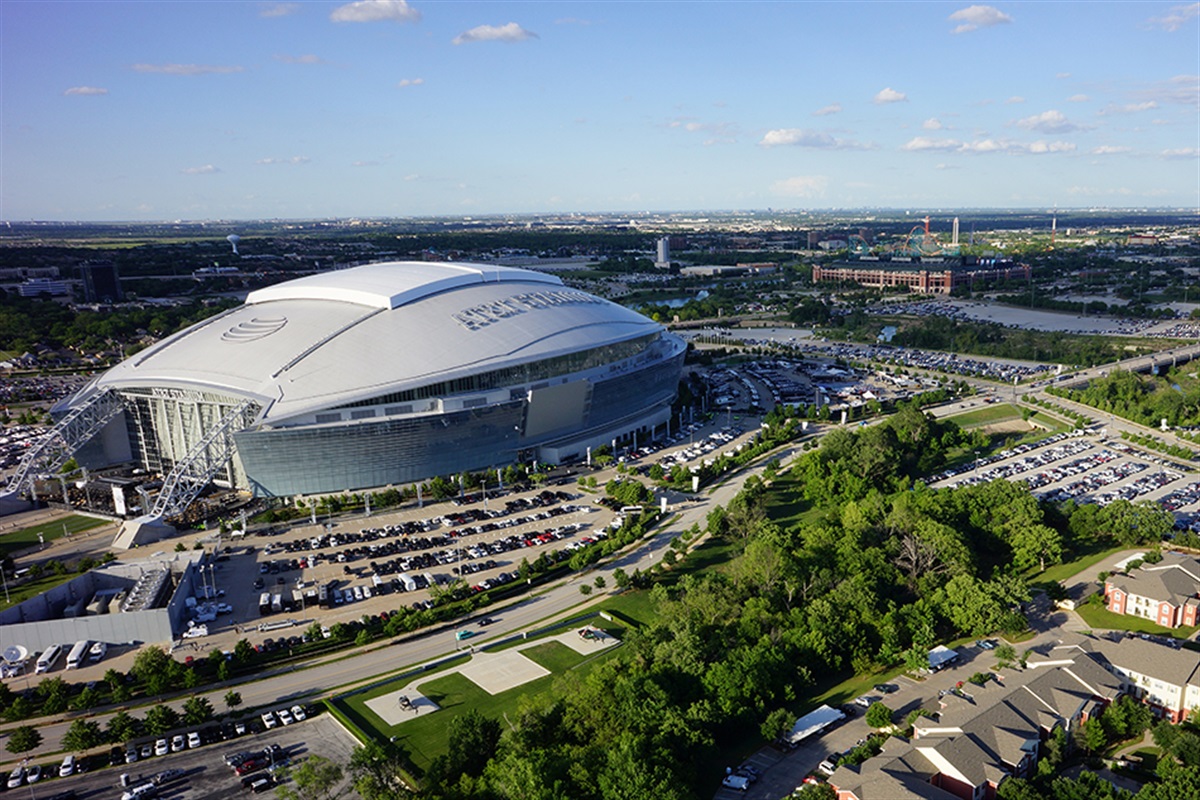
In 2025, AT&T Stadium in Arlington, Texas, home of the Dallas Cowboys, is the best place in the NFL for video and display technology. It gets updates all the time that make it even better. The world's largest center-hung television board, a 160-by-72-foot giant that shows 4K resolution replays and fan cams with such clarity that it rivals broadcast quality, is still its crown gem. This year, it was improved by adding 5G for interactive polling during games. In the summer of 2025, LG released the largest MAGNIT MicroLED display in North America. It has Chip-on-Board (COB) technology that locks LED pixels under a protective laminate for better brightness and durability. This reduces glare by 40% and makes it easy to switch between ads and highlights. There are also more than 3,000 Sony LCD panels in luxury suites, concourses, and concession stands. These screens are all connected to one other so that messages can be sent out at the same time to help spectators find shorter lines or promote eco-friendly food options using AI analytics.
Smart operations at the stadium include facial recognition at VIP gates to speed up access and RFID-enabled wristbands that keep track of attendance so that product prices can change. Automated HVAC systems that change based on occupancy sensors have made the building 25% more energy-efficient. In 2025, drone delivery zones will be added for in-seat food service, showing how the building is embracing new logistical technology. These new features not only make "Sunday Night Football" more exciting, but they also help with other events like concerts. AT&T has a flexible tech ecosystem that processes petabytes of data every season to improve the fan experience.
4. Lusail Stadium, Qatar:
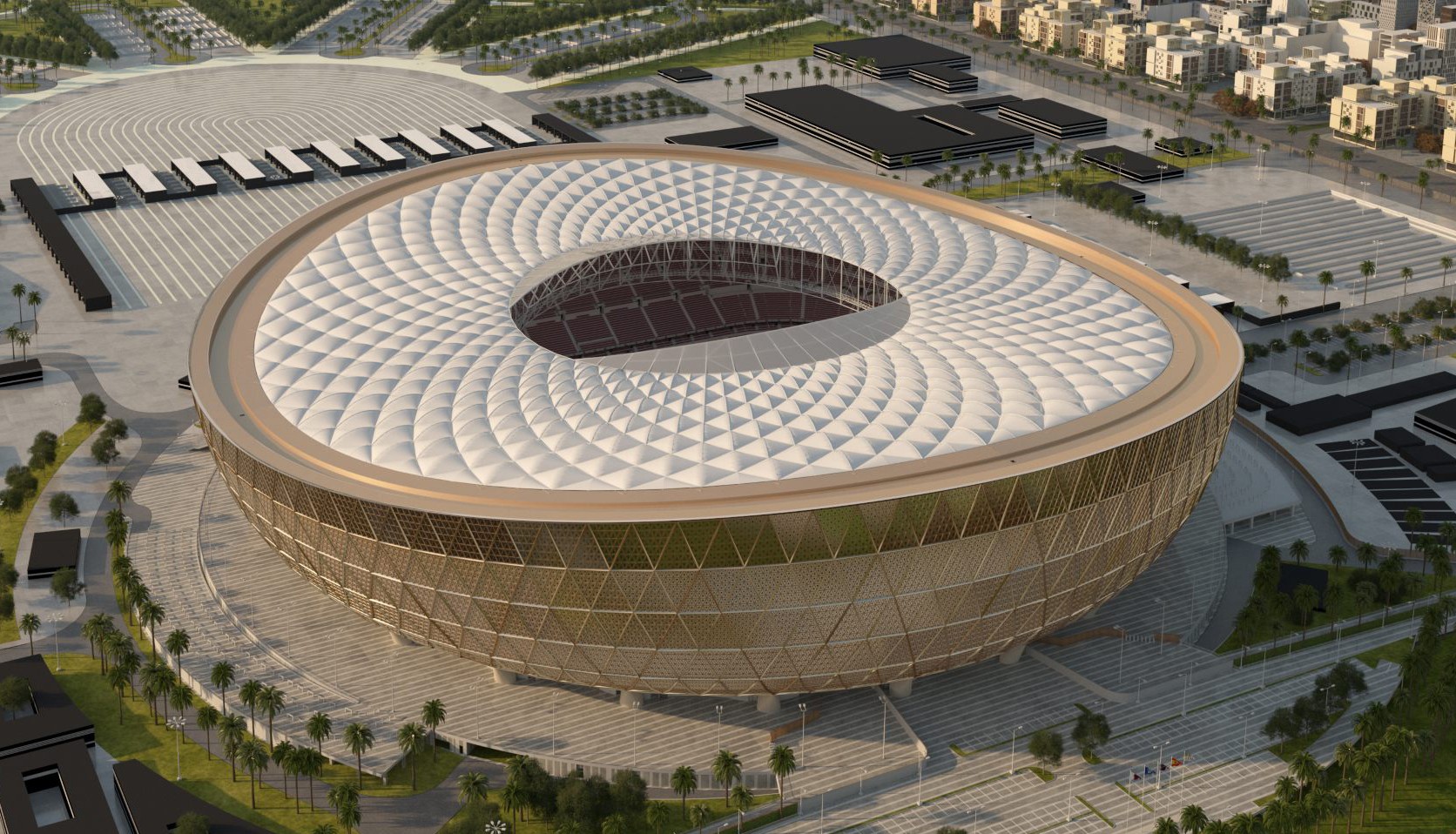
Lusail Stadium in Qatar, the crown jewel of the 2022 FIFA World Cup, has become a tech powerhouse by 2025 by using AI, IoT, and digital twins to improve operations and make the stadium more environmentally friendly in the desert climate. Its paperless Building Information Modeling (BIM) system is a major innovation. It is completely operational when the building is finished and uses laser-scanned point-to-point inspections to make a virtual twin of the whole 80,000-seat arena. This lets for predictive maintenance and real-time event simulations. This digital backbone supports AI-driven security systems, such as cameras that recognize faces and find unusual behavior in crowds with 99% accuracy, as seen during international matches with a lot of people. Energy optimization is a key feature. The stadium's modular, recyclable architecture has IoT sensors that regulate the cooling systems so that they use 30% less energy than standard venues. The retractable top also has solar panels that generate power on-site. Location-based technology like the Pearl Lounge uses beacon-guided navigation and augmented reality to give guests tailored concierge services, like virtual menus that are projected onto tables.
In 2025, Lusail's improvements include blockchain-secured ticketing to stop scalping and immersive 360-degree fan cams transmitted over 5G, which will make the world more connected. As Qatar tries to become a center for sports innovation, Lusail's technology stack, which is based on its FIFA history, makes it a model for venues that are strong and future-proof and blend entertainment with caring for the environment.
5. Allegiant Stadium, Las Vegas:
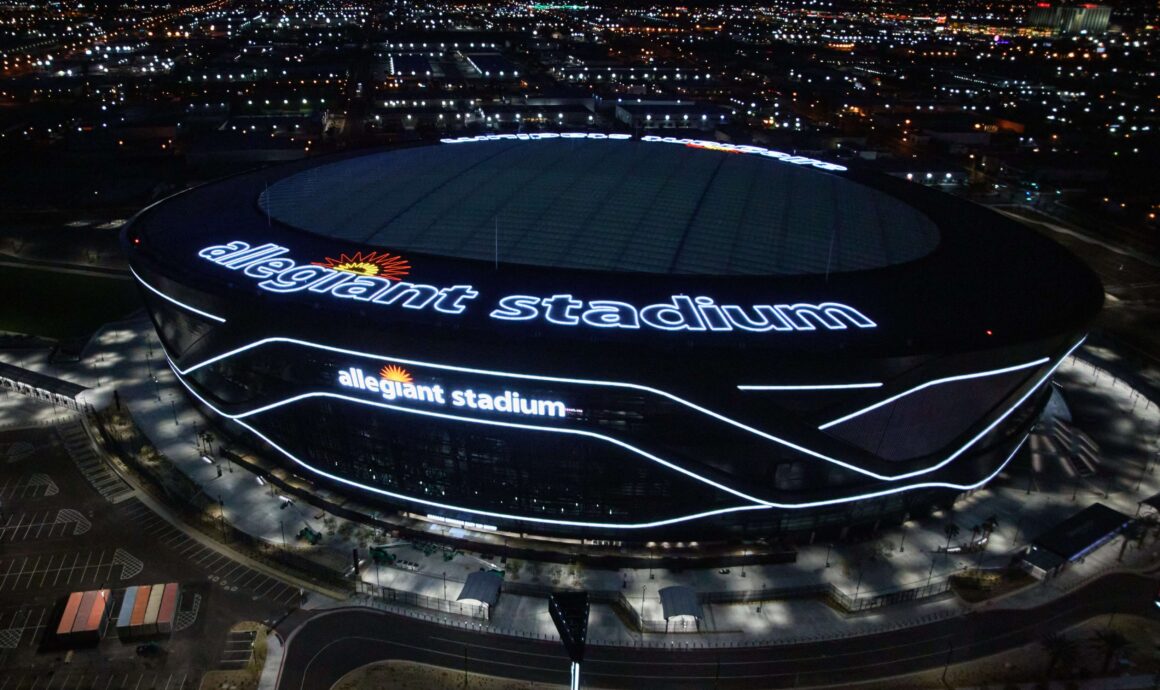
In 2025, Allegiant Stadium in Las Vegas is full of high-tech gadgets that make Raiders games and huge concerts even more exciting and efficient. This is a perfect example of the city's love of excess. The venue has always focused on complex digital ecosystems, such as a state-of-the-art video production suite with 8K-capable cameras and AI-enhanced replay systems that provide instant, multi-angle highlights to jumbotrons and mobile devices. LED lights that use less energy and are controlled by algorithms that change based on the event work 49% below code standards. They change brightness and color temperatures to match the mood of the game while using less power, which is great for the stadium's torch-like exterior that glows with programmable flames.
In-seat service tech is great because fans can order food and drinks with RFID tags, and drones deliver them, cutting wait times in half. The 2025 enhancements include bigger 5G micro-cells to make VR experiences smoother, letting people who aren't at the game "sit" courtside, and seismic monitoring linked to the stadium's ETFE canopy to send real-time notifications about structural problems. Haptic rumble seats for auditory immersion and AI chatbots for navigation are two examples of accessibility features that appeal to a wide range of people. Allegiant is a gamified arena where entertainment meets engineering precision. It will host Super Bowl LVIII and other events in the future. Its tech story starts with its below-grade foundation that muffles noise for neighbors and ends with its connection to Las Vegas's smart city grid.
6. Tottenham Hotspur Stadium, London:
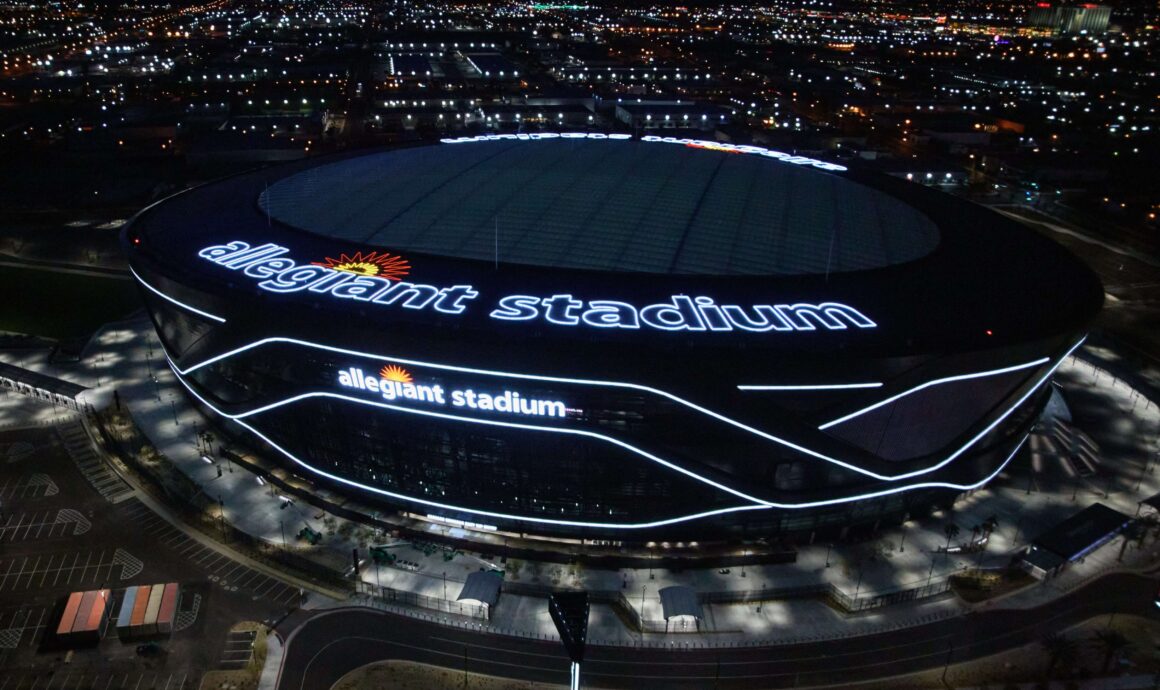
Tottenham Hotspur Stadium in London is a great example of the "smart stadium" transformation that will happen in 2025. It uses partnerships with HPE and Scality to make an atmosphere that connects over 62,000 people with passion and accuracy. At its core is a strong data lake system that safely stores petabytes of video from 360-degree cameras. This lets AI create highlights and personalized recaps for fans that are sent right away through the Spurs app.
LED-embedded wayfinding totems are digital signs that change in real time to help people find their way through cashless areas where biometric payments and facial recognition make it easier to get in and buy food. The stadium's sensory technology makes the experience even more immersive. For example, premium areas include bass-transmitting flooring, and directional audio speakers produce soundscapes that are zoned to reduce echo and improve clarity during Premier League or NFL London games. Sustainability leads to new ideas like using IoT to collect rainwater for lawn irrigation, which cuts water use by 40%, and modular acoustics that change for different performance setups.
In 2025, there will be improvements like augmented reality overlays for tactical breakdowns on personal devices and blockchain for clear ticketing. This venue's tech-forward architecture, from its retractable field to easy-to-use controls for game-day operations, turns matchdays into interactive stories. It sets a global standard for venues that change with fan expectations in an era of dynamic, tech-infused sports.
7. Mercedes-Benz Stadium, Atlanta:
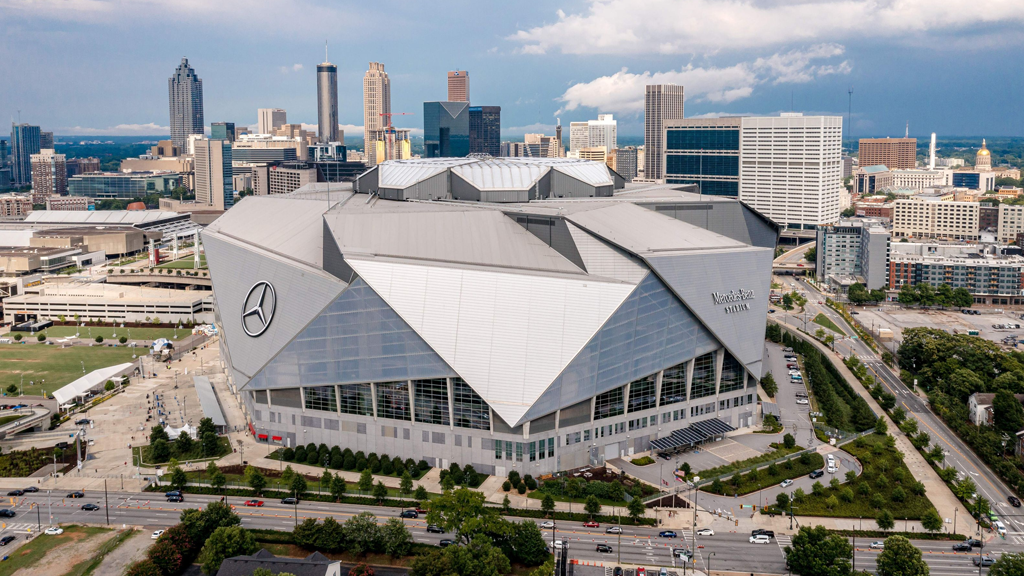
Mercedes-Benz Stadium in Atlanta is leading the way in innovation in 2025. It will have a number of changes that combine high-end car technology with sports venue technology to make things easier for both Falcons fans and concertgoers. One of the most important updates for 2025 is LG's stadium-wide LED displays, which now power the oculus roof and perimeter boards with 8K resolution and adjustable brightness. This makes the venue ready for the Club World Cup and the 2026 FIFA World Cup with content that syncs perfectly. ParkHub's parking technology uses license plate recognition and app-based predictive spot distribution to save arrival times by 25% during busy events.
The stadium's production system was completely rebuilt in three phases through 2024, using SMPTE 2110 IP workflows. This made it possible to route uncompressed 4K and 8K video via improved control rooms for broadcast-quality feeds. Delta's Fly-Through Lanes are a great example of new ways to get into a venue. They have frictionless gates that employ face biometrics and mobile queues to let fans in without tickets, and they work with wearable gear to check health in real time. The halo roof's ETFE panels, which collect rainwater and make solar power, help the building reach its net-zero goals. AI also makes the HVAC system work better based on how many people are there.
These features come together to create a place that is both a tech lab and a stadium, hosting a wide range of events with modular seating and immersive holographics. This makes Atlanta a center for global sports technology.
8. Singapore National Stadium, Singapore:
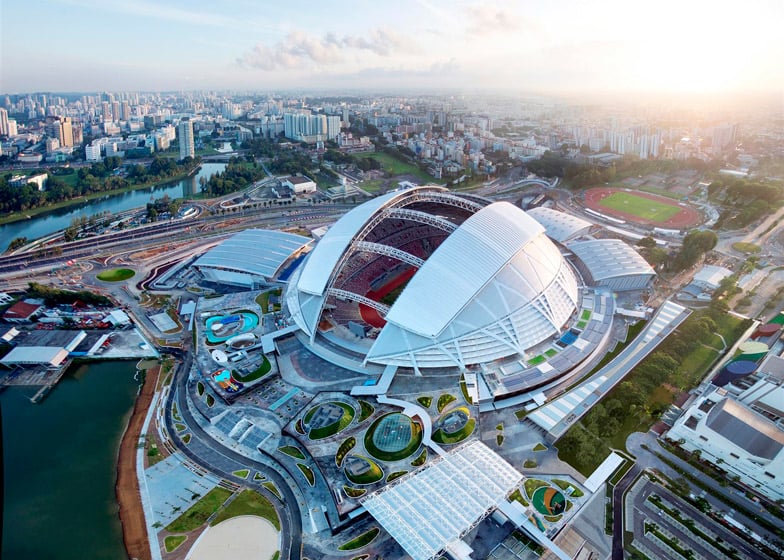
In 2025, the Singapore National Stadium becomes Asia's tech giant. Its 55,000-seat dome uses amazing engineering to host a wide range of events, from football games to concerts, in any weather. The retractable roof, which is the largest free-span structure in the world at 310 meters, has 20,000 LEDs built into it. These LEDs can be used as a huge projection screen to broadcast bright images across the building for synchronized light shows or score updates that can be seen from every seat. Innovative moving tiers let you change the pitch to stage in less than 10 hours. They are controlled by automated hydraulics and sensors that make sure everything is perfectly aligned. This makes it easy to switch from rugby, athletics, or pop shows. In Singapore's humid climate, the naturally ventilated design with ETFE panels cuts down on cooling needs by 30%. This is made even better by IoT-monitored air quality systems that change flows in real time.
The improvements for 2025 include 5G-enabled AR fan zones for interactive challenges and AI-driven concessions that can estimate demand to cut down on lines. Advanced acoustics with panels that can be tuned make sure the sound is crystal clear, and sustainable lawn tech recycles water on-site. This venue is a key part of the Singapore Sports Hub. It combines ultra-thin dome engineering with digital overlays to create an adaptive ecosystem that fits with the city's vision of smart, multifunctional urban spaces that put health and wonder first.
9. Allianz Arena, Munich:
The Allianz Arena in Munich will shine brighter than ever in 2025. This is because of the eco-friendly technology that was added during the summer renovations. It will be a great place for 75,000 devoted fans to see a show and take care of the arena. The famous LED facade on the outside has been changed to full-color panels, which use 60% less energy than the original configuration. This means that dynamic color changes can be made for team themes or climate awareness campaigns using 100% green electricity. There are 19 Viessmann Vitocal 350 HT-PRO heat pumps inside that provide decentralized heating. They use air-source efficiency to cut fossil fuel use by 50% in offices, suites, and concourses, making them a model for updating old facilities. The new turf, which was put in before the season started, has fibers with sensors in them that keep track of moisture and wear. AI optimizes maintenance to make it last 25% longer. Roofed turnstiles with biometric scanners and a new Welcome Center with interactive holograms make it easier to get in. The Bayern app will also have augmented reality match guides starting in the 2025/26 season. Waste-sorting robots in the stands and solar-powered seating that charges electronics are examples of how sustainability goes beyond the basics. This mix of visual magic, from the glowing shell to the immersive jumbotrons and green ideas, makes Allianz a stronghold of forward-thinking ideas. There, technology boosts Bavarian football excitement while promoting a cooler world.
10. Levi’s Stadium, Santa Clara:
Levi's Stadium in Santa Clara is the last on this list. It got a $200 million makeover that was revealed in August 2025. The San Francisco 49ers' home stadium is now next-gen, with sensory-overload videoboards and AR magic. The main attraction is the two 4K videoboards on either side of the field, which show 20 million pixels of crystal-clear content, from slow-motion replays to fan-voted highlights. This is all made possible by a complete tech upgrade that incorporates IP-based display routing for broadcasts with no delay. The stadium app puts augmented reality front and center by putting live stats, player bios, and interactive maps on phone cameras. This lets supporters "scan" the field for tactical insights or give athletes virtual high-fives. The multi-year production improvement ends with AI-controlled control rooms that process crowd data for dynamic lighting and sound zoning. This makes the "Under the Lights" environment even better for night games. Solar canopies provide 20% of the energy needed, and IoT lawn sensors make sure that the grass is watered just right. New gameday features like haptic feedback in premium seats make the seats vibrate with critical plays. Levi's is the perfect place for Horizon Summit 2025 and the Super Bowl and World Cup. It turns games into tech-filled excursions that connect the real world and the digital world for an amazing 68,500-fan excitement.
Comments 0